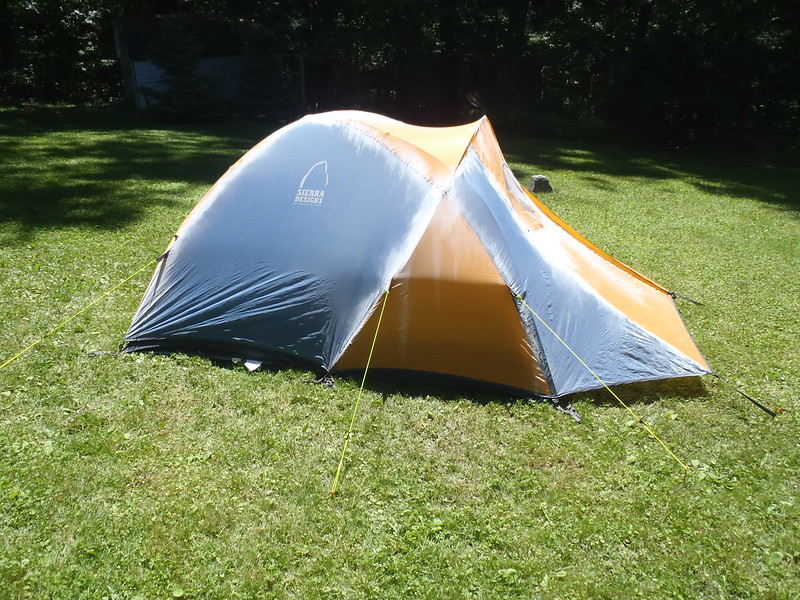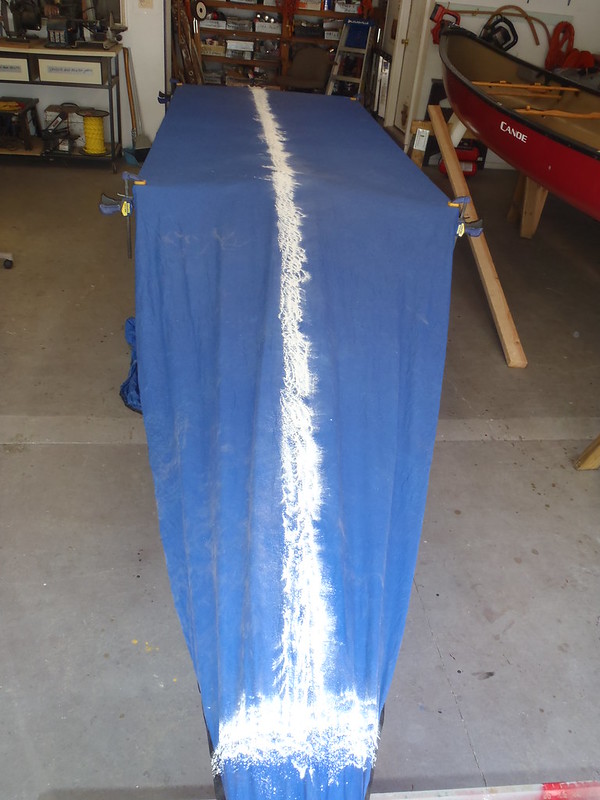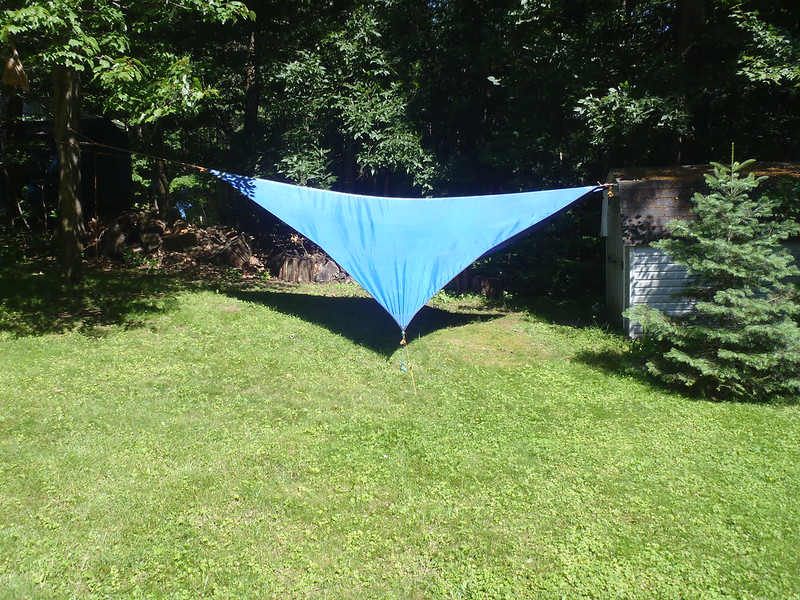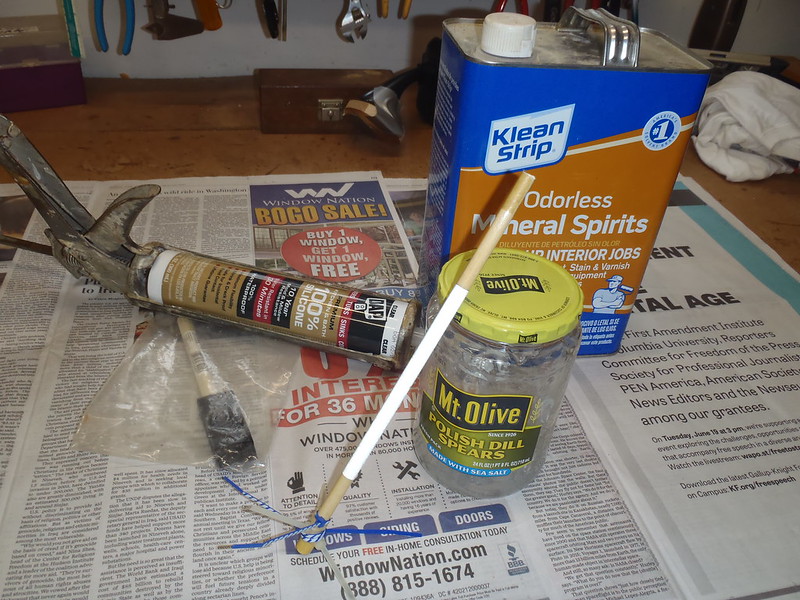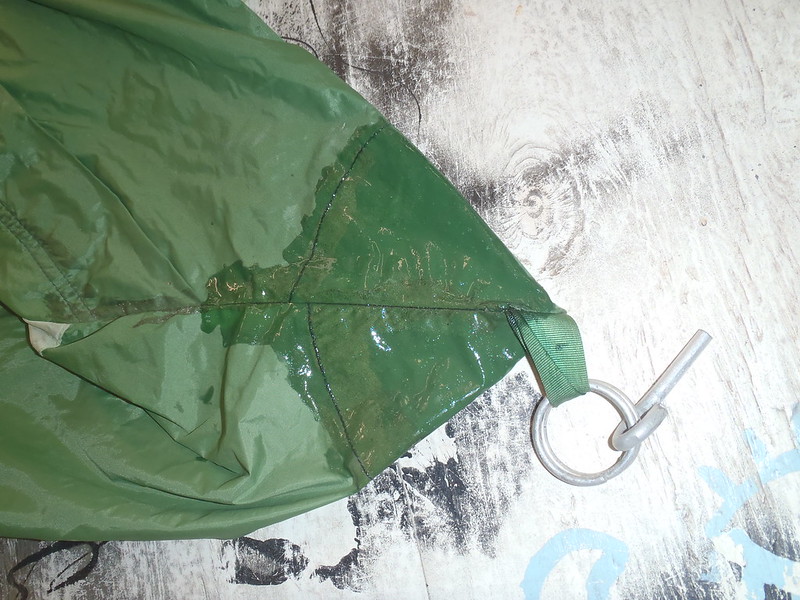G
Guest
Guest
You can make your own sealant for silnylon. Get a caulking tube (or 2 or 3) of good quality 100% silicone. Cut it with mineral spirits (I have also used lacquer thinner) until it is the consistence that you want or need for penetration. Use a clean glass jar to be able to visualize complete dilution. I use a small narrow disposable foam brush to apply.
I am still a little leery of painting a solution containing mineral spirits on a tarp. No reason, just never done that before. I will start with one of the older crapped out urethane coated nylon windblock side tarps, just to see what happens.
I finally got around to trying this. Not just as DIY sealant for sil-nylon gear, as an experimental starter I tried it first on the ancient urethane coated nylon Eureka Annex accessory. Not a vestibule, but an oddly cut door-end tarp for the old the 4-person Timberline. Now used mostly as a windblock.
The odd size, shape and corner clips of that Annex makes a perfect wind block for one end of a ridgeline vee tarp, and it is easy to unclip and relocate to the other side when the front moves through and the wind changes direction.
The Annex was semi-useless on the Timberline, rain blew in the sides and end and it was a long duckwalk to get to the tent door. Gimme a closed vestibule any day. But it the Annex is 20+ years old and the perfect sacrificial lamb for the DIY seam seal mix experiments.
That Annex tarp had not been used for a few years and needed airing out. And maybe a Mirazime bath after sealing. Seams stretched out and clamped on the tabletop.
I mixed up a small batch of DIY seam seal concoction, maybe a 50/50 mix of 100% silicone caulk and mineral spirits. It was reluctant to thoroughly mix via stirring alone, so I alternated stirring, shaking, letting it sit and repeat until it had a slightly viscous gel-like consistency.
For comparison sake I had a 2 ounce bottle of toluene-based Hilllary seam seal on the shelf; reading Toluene as an ingredient made me feel better about using mineral spirits. And a bottle of Gear-Aid water based seam seal on the gear shelves. Why not experiment?
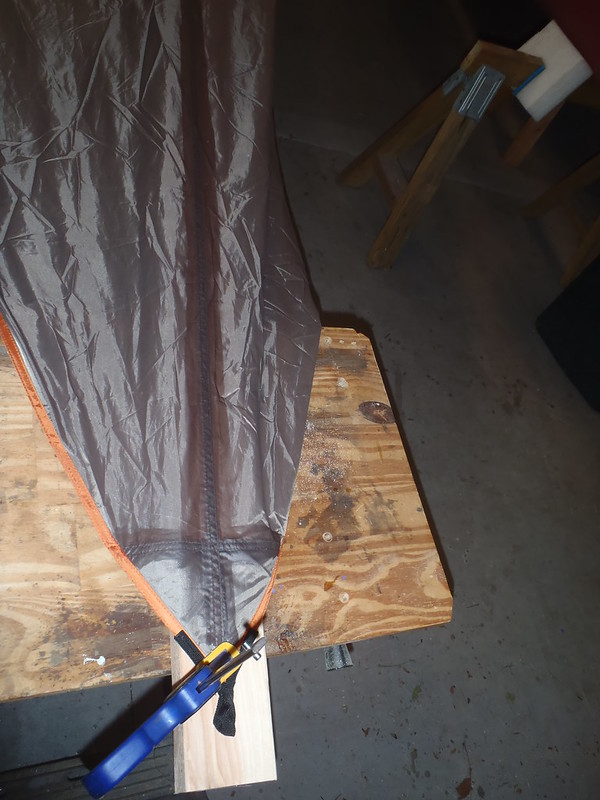 P6090850 by Mike McCrea, on Flickr
P6090850 by Mike McCrea, on FlickrI marked the tarp for what I used where, Toluene base on one end, water base on the other *, DIY mix down the long middle seam.
*Reminder to self: The end marked Toluene is actually the water based, and vice versa. Dunna ask, the shop is confusingly fun at times.
With the Annex done and hanging in the sun off the back deck my curiosity was spurred. I looked about on-line and found this DIY seam sealant video:
https://www.youtube.com/watch?v=MC-KftF39J8
My materials, mix and viscosity were right on. I like the Zip-tie stirrer idea, for that seam seal mix and many other stirring applications; old 5 gallon cans of deck waterproofing that go semi-solid at the bottom spring to mind. But I shuddered at the mineral spirits cap inadvertently left unattached on his work area.
The seam seal application video is equally detailed, including a long forgotten hint; Talcum powder!
https://www.youtube.com/watch?v=54VvlMRh1yI
I have a vague memory of hearing that talcum powder trick before, and am willing to give it a go. One bedevilment with some seam seal products is sealed parts of the tarp sticking together during storage.
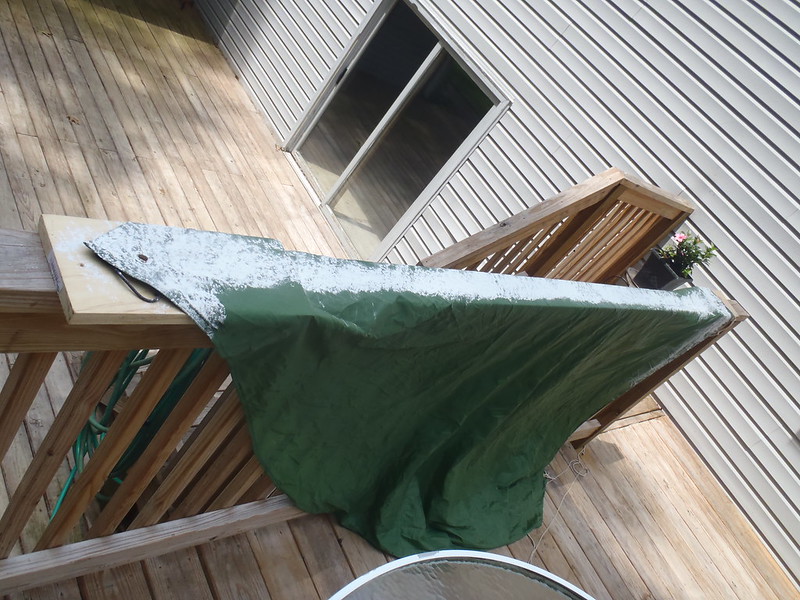
That first side was dry in an hour. I leaf blowered off the excess talcum powder (I should not have been as chincy with the powder; next time, still an experimental work in progress) and did the more important top side stitching on the tarp the same way.
Clamped easy-reach on the table, with no time spent on yard erection, the tarp took minutes to paint the DIY sealer on the stretched seam. I let it seep in and set up a bit, wiped off any excess with a paper towel and hung it on the deck again. With a more robust sprinkle of talcum powder this time.
I let the Annex dry for a day, then packed it away tightly compressed for a few days and see if the talcum powder really prevented sticky.
The talcum powder experiment was successful. With the Annex tightly compressed in a ditty bag and left to bake on the dash of the hot sunny truck for a day it came out of the stuff bag without even a hint of stuck-togetherness from the fresh seam seal.
I will use that talcum powder trick on every tarp and tent.
(In the interest of full disclosure we had no talcum powder in the house. I used Shower to Shower Sport body powder, which was far less perfumee than Shower to Shower Original Fresh. My tarps smelled manly before I blew off the excess. I need to buy a can of unscented talcum powder.
Last edited:



